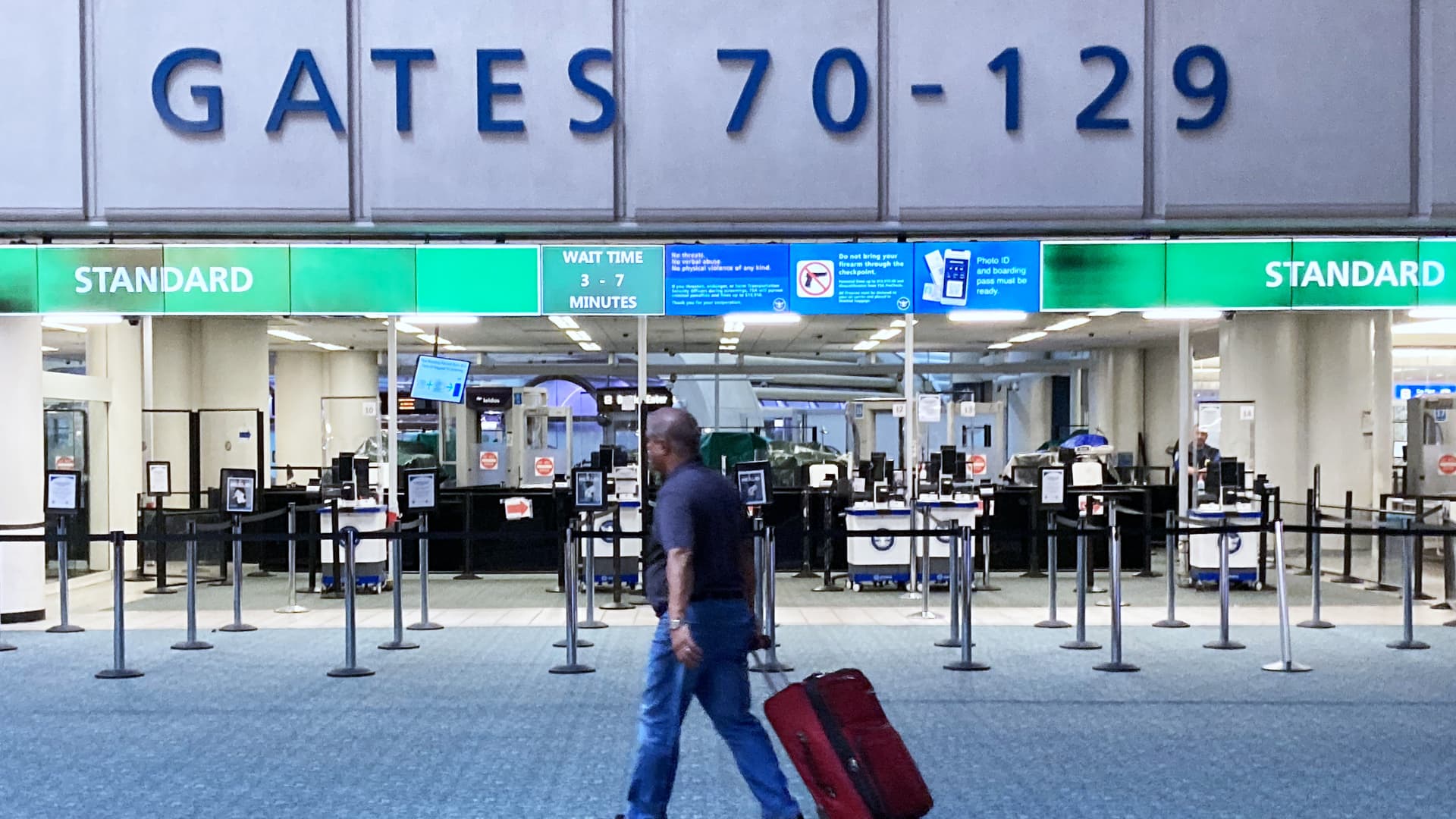A lone traveler makes his way past a nearly deserted TSA security screening area at Orlando International Airport ahead of the arrival of Hurricane Milton, on October 9, 2024 in Orlando, Florida.Â
Paul Hennessy | Anadolu | Getty Images
A government shutdown is looming just as the peak holiday travel season gets underway.
Lawmakers have been at an impasse and on Thursday voted down a short-term bill, which was backed by President-elect Donald Trump, to continue to fund the U.S. government. A shutdown could begin as early as 12:01 a.m. ET on Saturday if no deal is reached.
Hundreds of thousands of government employees would be furloughed if Congress fails to pass a spending bill.
What does this mean for air travel?
Commercial airplanes are still scheduled to fly, even given the chance of a shutdown.
Airlines are forecasting the busiest year-end holiday season on record. The Transportation Security Administration expects its officers to screen more than 40 million people during the holidays through Jan. 2. United Airlines alone expects to fly 9.9 million people between Dec. 19 and Jan. 6, up 12% over last year.
The government deems the more than 14,000 air traffic controllers and close to 60,000 TSA agents essential, which means they would continue working, though they wouldn’t be paid during the shutdown.
Prepare for longer lines?
TSA officers “would continue working without pay in the event of a shutdown,” the agency’s administrator, David Pekoske, said on social media platform X on Thursday.
“While our personnel have prepared to handle high volumes of travelers and ensure the security of our transportation systems, an extended shutdown could mean longer wait times at airports,” the TSA said in a statement on Friday.
What happened last time?
The last time the government shut down, it stretched for more than a month from late 2018 through early 2019.
Callouts from a few air traffic controllers in the highly congested airspace along the U.S. East Coast snarled air traffic during that shutdown. Then-President Trump and lawmakers reached a deal shortly after that to end the shutdown, the longest funding lapse in the United States.

